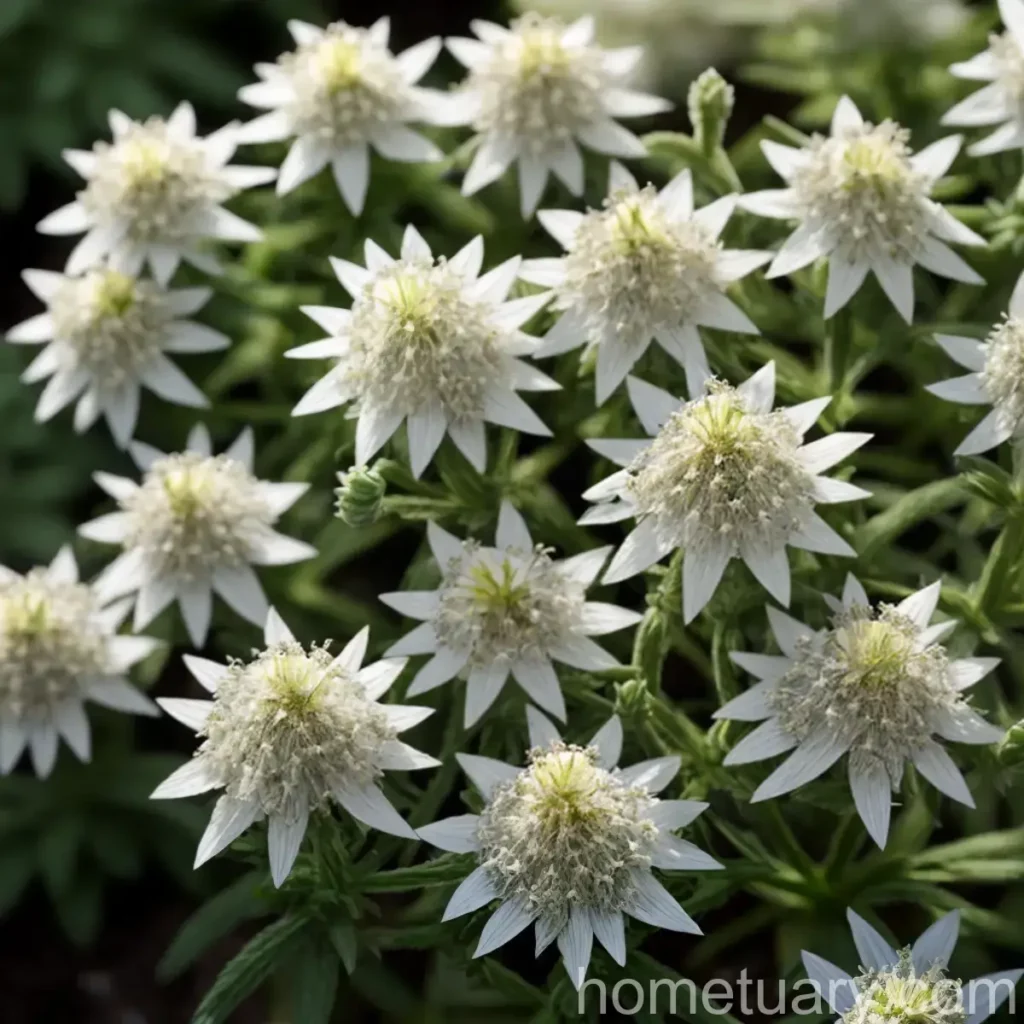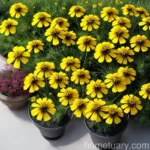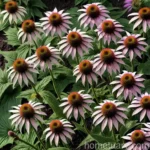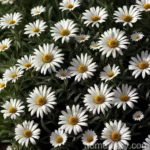Edelweiss (Leontopodium alpinum): A Fascinating Alpine Plant
Introduction
Alpine plants offer a glimpse into the beauty and resilience of flora thriving in high-altitude environments. Among these remarkable species, the edelweiss (Leontopodium alpinum) stands out as a symbol of rugged beauty and cultural significance. In this comprehensive guide, we will delve into the captivating world of edelweiss, exploring its characteristics, cultural uses, care requirements, and more. Whether you are an avid gardener, a nature enthusiast, or simply curious about this iconic mountain flower, this blog post aims to provide you with a wealth of knowledge about the edelweiss plant.
What is Edelweiss (Leontopodium alpinum)?
The edelweiss, scientifically known as Leontopodium alpinum, is a perennial plant belonging to the Asteraceae family. This striking alpine plant, characterized by its woolly, star-shaped flowers, thrives in rocky mountainous regions, particularly in the Alps, Carpathians, and Pyrenees. The name “edelweiss” is derived from the German words “edel,” meaning noble, and “weiß,” meaning white, reflecting the plant’s elegant appearance and distinctive snowy blooms.
Key Takeaways – Edelweiss (Leontopodium alpinum)
- Scientific Name: Leontopodium alpinum
- Family: Asteraceae
- Common Name: Edelweiss
- Habitat: Alpine regions of Europe
- Characteristics: Woolly, star-shaped white flowers with silvery-green foliage
- Cultural Significance: Symbol of alpine beauty and traditions
- Conservation Status: Varies by region, with some populations considered endangered
Culture
Uses
The edelweiss holds a revered status in various cultural contexts, serving as a symbol of purity, bravery, and enduring love. Traditionally associated with alpine folklore and mountainous regions, this iconic flower has captured the imagination of poets, artists, and explorers for centuries. From its depiction in literature and art to its use in traditional medicine and folklore, the edelweiss embodies a wealth of cultural significance.
Water
In its natural alpine habitat, the edelweiss thrives in well-drained, rocky soils with relatively low moisture levels. While it is adapted to endure the harsh conditions of high altitudes, it is essential to provide adequate moisture without waterlogging the soil. During the growing season, moderate watering is recommended, ensuring that the soil does not dry out completely between waterings. In periods of dormancy or winter, it is advisable to reduce watering to mimic the plant’s natural environment.
Sunlight
As a plant native to high-altitude environments, the edelweiss thrives in full sun and requires a minimum of 6 hours of direct sunlight daily. When cultivating edelweiss in a garden or container, it is essential to select a location that receives ample sunlight, allowing the plant to harness the energy it needs to bloom and flourish.
Fertilizer
Given its adaptation to nutrient-poor alpine soils, the edelweiss is relatively low-maintenance in terms of fertilization. A balanced, slow-release fertilizer applied in the spring can support healthy growth and flowering. However, it is crucial to refrain from over-fertilizing, as excessive nutrients can lead to lush foliage at the expense of flower production, compromising the plant’s natural beauty.
Soil
The edelweiss thrives in gritty, well-drained soils with a slightly acidic to neutral pH. A mix of rocky or sandy soil with good drainage is ideal for cultivating this alpine beauty. When considering soil composition, incorporating organic matter sparingly can help improve the soil structure and nutrient retention, mimicking the conditions of its native mountainous habitats.
Pruning
Minimal pruning is required for the edelweiss, as it naturally maintains a compact and tidy growth habit. Deadheading spent flowers can promote continuous blooming and prevent the plant from expending energy on seed production. Additionally, removing any diseased or damaged foliage can help maintain the overall health and appearance of the plant.
Propagation
Propagating edelweiss can be achieved through division or seed sowing. Division, typically carried out in early spring, involves separating the plant’s rhizomes and replanting them in suitable growing locations. Alternatively, seed propagation can be pursued, with seeds sown in well-draining, sandy soil and placed in a location with ample sunlight. While germination may take time, propagating edelweiss from seeds can be a rewarding endeavor for gardening enthusiasts.
Container Popularity
Given its compact and elegant nature, the edelweiss is well-suited for container cultivation, making it an appealing choice for alpine-themed gardens, rockeries, and balcony displays. Its adaptability to container growing allows enthusiasts to appreciate the beauty of this mountain flower in various settings, adding a touch of alpine charm to urban and suburban landscapes.
Common Diseases
While the edelweiss possesses natural resilience to harsh alpine conditions, it may be susceptible to certain diseases in less-than-ideal growing environments. Common diseases that can affect edelweiss include powdery mildew, root rot, and fungal infections. Monitoring the plant for signs of disease, maintaining appropriate growing conditions, and practicing proper watering techniques can mitigate the risk of disease development.
Disease Diagnosis
- Powdery Mildew: Presents as white powdery spots on leaves
- Root Rot: Symptoms include wilting, yellowing foliage, and root discoloration
- Fungal Infections: Visible as discolored, distorted, or necrotic areas on leaves and stems
Common Pests
In its native alpine habitats, the edelweiss exhibits natural resistance to many common pests. However, in cultivated settings, it may encounter pests such as aphids, spider mites, and snails. Regular inspection, early pest detection, and the use of natural predators or organic pest control methods can help safeguard the plant from pest infestations.
Botanist’s Tips
- Select a well-draining soil mix with a sandy or rocky texture to mirror the edelweiss’ native habitat.
- Avoid over-watering, as the edelweiss is adapted to survive in relatively dry conditions.
- Provide ample sunlight for optimal growth and flowering, mimicking the plant’s high-altitude environment.
Fun Facts
- The edelweiss has been historically associated with courage and love in alpine folklore and traditions.
- The woolly hairs on the edelweiss’ flowers and leaves serve as protection against intense UV radiation at high altitudes.
- Edelweiss has been used in traditional medicine for its purported anti-inflammatory and antioxidant properties.
Links to External Resources
For further exploration of edelweiss and alpine flora, the following resources provide valuable insights and information:
- Alpine Edelweiss Foundation
- Botanical Society of America
- European Environment Agency – Alpine Biodiversity
Conclusion
As a symbol of alpine beauty, resilience, and cultural significance, the edelweiss (Leontopodium alpinum) stands as a remarkable example of nature’s ingenuity. From its ability to thrive in extreme mountainous environments to its enduring portrayal in art, literature, and folklore, the edelweiss continues to captivate and inspire. Whether cultivated in gardens, admired in its natural habitats, or celebrated in cultural traditions, the edelweiss remains an enduring emblem of the majestic alpine landscapes it calls home.
Through an understanding of its care requirements, cultural uses, and unique adaptations, we can gain a deeper appreciation for the enduring allure of the edelweiss, fostering a connection to the natural marvels of high-altitude flora and the stories they tell.
With its delicate beauty and rugged spirit, the edelweiss remains an enduring reminder of the enchanting world of alpine plants, inviting us to cherish and safeguard the ecological treasures that adorn the highest reaches of our planet.















